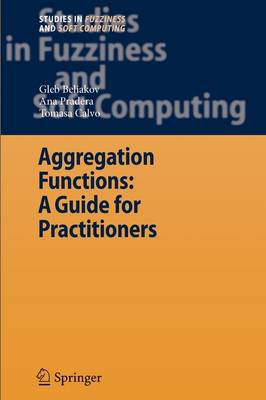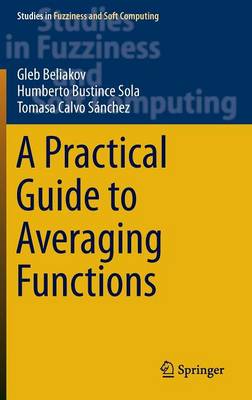Studies in Fuzziness and Soft Computing
3 primary works
Book 221
Aggregation Functions: A Guide for Practitioners
by Gleb Beliakov, Ana Pradera, and Tomasa Calvo
A broad introduction to the topic of aggregation functions is to be found in this book. It also provides a concise account of the properties and the main classes of such functions. Some state-of-the-art techniques are presented, along with many graphical illustrations and new interpolatory aggregation functions. Particular attention is paid to identification and construction of aggregation functions from application specific requirements and empirical data.
Book 329
A Practical Guide to Averaging Functions
by Gleb Beliakov, Humberto Bustince Sola, and Tomasa Calvo
This book offers an easy-to-use and practice-oriented reference guide to mathematical averages. It presents different ways of aggregating input values given on a numerical scale, and of choosing and/or constructing aggregating functions for specific applications. Building on a previous monograph by Beliakov et al. published by Springer in 2007, it outlines new aggregation methods developed in the interim, with a special focus on the topic of averaging aggregation functions. It examines recent advances in the field, such as aggregation on lattices, penalty-based aggregation and weakly monotone averaging, and extends many of the already existing methods, such as: ordered weighted averaging (OWA), fuzzy integrals and mixture functions. A substantial mathematical background is not called for, as all the relevant mathematical notions are explained here and reported on together with a wealth of graphical illustrations of distinct families of aggregation functions. The authors mainly focus on practical applications and give central importance to the conciseness of exposition, as well as the relevance and applicability of the reported methods, offering a valuable resource for computer scientists, IT specialists, mathematicians, system architects, knowledge engineers and programmers, as well as for anyone facing the issue of how to combine various inputs into a single output value.
Book 382


